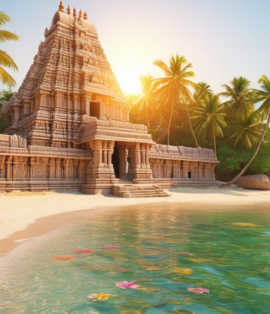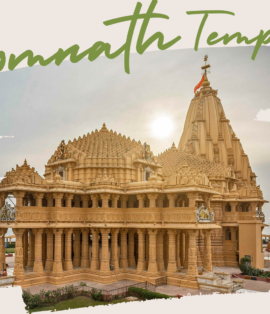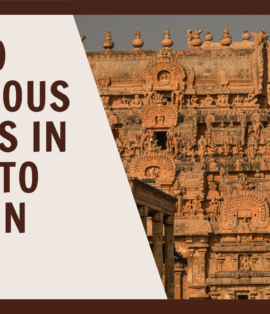Hawa Mahal: The Iconic Palace of Winds in Rajasthan
Nestled in the heart of Jaipur, Rajasthan’s capital city, the Hawa Mahal stands as an architectural marvel and a testament to India’s rich cultural heritage. Known as the “Palace of Winds,” this five-story structure, built in 1799 by Maharaja Sawai Pratap Singh, is one of the most recognizable landmarks in India. Designed by Lal Chand Ustad, the Hawa Mahal is a fusion of Rajput and Mughal architectural styles, reflecting the grandeur and ingenuity of its time.
A Glimpse into the History
The Hawa Mahal was constructed primarily to allow royal women to observe the daily life and festivities on the streets below without being seen, adhering to the strict purdah system of the era. The palace’s unique design, with its lattice windows and intricate jharokhas (balconies), ensured privacy while facilitating ventilation, making it a marvel of functional architecture.
Architectural Brilliance
The Hawa Mahal is built from red and pink sandstone, harmonizing beautifully with Jaipur’s famed “Pink City” aesthetic. Here are some of its key architectural features:
Fascinating Facade:
- The front facade of the Hawa Mahal resembles a honeycomb or a crown adorned with 953 small windows (jharokhas).
- These windows are intricately designed with latticework, allowing cool air to pass through—a natural cooling system, which is particularly ingenious in Rajasthan’s hot climate.
Pyramidal Structure:
- The palace rises to a height of five stories, with each floor diminishing in size as you ascend. Despite its towering appearance, the building is only a few feet thick, lending it an ethereal, almost screen-like quality.
Fusion of Styles:
- The Rajput influence is evident in the fluted pillars, domed canopies, and floral patterns, while the Mughal style is reflected in the arches and intricate stone inlay work.
No Stairs:
- The palace has ramps instead of stairs, allowing easy movement across its levels. This feature showcases the thoughtful design elements integrated into its construction.
Cultural Significance
Beyond its architectural charm, the Hawa Mahal holds immense cultural significance. It is a symbol of Jaipur’s royal legacy and a reminder of the ingenious blend of aesthetics and functionality that defined Indian architecture during the 18th century. The palace is also a favorite subject for photographers, thanks to its intricate details and striking pink facade.
Visiting Hawa Mahal
A visit to the Hawa Mahal is a must for travelers exploring Jaipur. Here’s what you need to know:
Timings:
- The palace is open from 9:00 AM to 4:30 PM every day.
Entry Fee:
- Indian Nationals: INR 50
- Foreign Nationals: INR 200
Best Time to Visit:
- Early morning is the best time to visit the Hawa Mahal, as the golden sunlight enhances the beauty of its pink facade.
Location:
- Situated at the heart of Jaipur, the Hawa Mahal is easily accessible by road.
Visitor Tips:
- Wear comfortable shoes as you’ll be walking and climbing ramps.
- Bring a water bottle to stay hydrated, especially during summer visits.
- Hire a guide or use audio guides to understand the palace’s history and significance better.
- Avoid visiting during peak hours to enjoy a more serene experience.
- Don’t miss the view from the top, which offers a stunning panorama of Jaipur city.
- Carry a camera to capture the intricate details and the mesmerizing facade.
Nearby Attractions
While visiting the Hawa Mahal, you can also explore other attractions nearby, such as:
City Palace:
A sprawling complex that serves as the residence of Jaipur’s royal family.
Jantar Mantar:
- A UNESCO World Heritage site known for its astronomical instruments.
Albert Hall Museum:
- Rajasthan’s oldest museum, showcasing a rich collection of artifacts.
Johari Bazaar:
- A bustling marketplace ideal for shopping traditional Rajasthani jewelry and textiles.
Conclusion
The Hawa Mahal is more than just a palace; it is a symbol of Jaipur’s vibrant history and architectural ingenuity. Whether you’re a history enthusiast, an architecture aficionado, or simply a traveler seeking to soak in the essence of Rajasthan, the Hawa Mahal promises an unforgettable experience. Its intricate beauty and cultural resonance make it a must-visit destination for anyone exploring the wonders of India.






